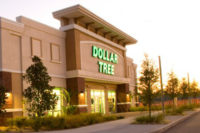Dollar Stores
Shopping frequency, basket size and dollar store assortments are all on the rise, as this ultimate ‘value’ channel continues to establish itself as an important part of the retail landscape.
For the recent past, an aggressive agenda of store expansion has contributed to strong dollar channel sales growth. Between 2006 and 2001, more than 7,300 additional dollar stores were added to the retail landscape, according to The Nielsen Company’s 2007 “U.S. Retailing & Consumer Trends” analysis compiled by Todd Hale, senior vice president, consumer and shopper insights.
Channel leader Dollar General’s acquisition by
private equity firm Kohlberg, Kravis & Roberts Co. was completed
earlier this summer. The chain had already slowed its pace of store
openings and closed hundreds of its lower-performing stores, and retail
analysts expect that under KKR’s ownership, the pace of closings will
increase.
According to National Confectioners Association data,
the dollar channel still accounts for a modest — 2.7% in 2006 —
share of total confections category sales. Clearly, however, the category
has been getting more respect from candy vendors, who have acknowledged its
importance with pack types and price points tailored specifically to the
channel. The candy category tends to be well developed in dollar stores. It
plays a key role in the packaged goods assortment of retailers in each of
the category’s two segments — single-price chains where
virtually all merchandise is priced at $1 or 99 cents and those like Dollar
General with a strong value orientation but a broader array of price
points.
|
SWOT Analysis
Strengths • Ease of shopping; in and out is typically a breeze
• Consumers in most income brackets are looking for value
Weaknesses • Core, low-income shoppers are very vulnerable to fluctuating economic conditions
• Limited assortments, less than optimal merchandising, little customer service
Opportunities • Continued grocery product emphasis expected
• With trip frequency increasing, there are more opportunities to generate impulse candy sales
Threats • Product safety issues — real or perceived — from imported merchandise
• Retailing behemoth Wal-Mart also does a pretty fair job with discounted candy
|
Who shops dollar stores?
One-third of dollar store shoppers — mainly
lower-income consumers — account for 85 percent of channel sales,
according to an Information Resources Inc. “Times and Trends”
report on the channel.
Still, however, dollar stores — like other
“value” retailers (club stores and supercenters) are popular
with more upscale consumers who don’t hesitate to seek out good deals
and understand that shopping in a variety of channels is a good way to find
them. “U.S. consumers have a big thirst for variety,” Hale
states in his analysis.
| Channel Leaders | |||
| Chain | Annual Sales % (in billions) | Change (vs. prior year) | |
| 1. Dollar General | $9.2 | 6.8% | |
| 2. Family Dollar | $6.4 | 9.8% | |
| 3. Dollar Tree | $3.9 | 17.0% | |
| 4. Fred's | $1.8 | 11.2% | |
| 5. 99 Cents Only | $1.1 | 7.9% | |
| Most recent fiscal year Source: Hoovers |
|||
“Today’s dollar stores have captured the
hearts and imagination of the under $25,000-a-year-income consumer, while
simultaneously penetrating the up-market consumer with a very appealing
value equation — two major feats in retailing,” summarizes Thom
Blischok, president, IRI Retailing Solutions, Strategic Consulting and
Integrated Solutions.
In addition, key players in the channel are making
dollar stores a more welcoming environment for consumers as many of the
chains have relaxed their one-time prohibitions on acceptance of credit and
debit cards and food stamps.
Non-food products traditionally have represented more
than half of dollar store CPG sales. The major players in the category are
adding refrigerated and frozen capacity, and dollar retailers have begun to
compete more aggressively with the grocery channel thanks to their
expanding assortment of food and beverage SKUs, which, in turn, drives
shopping frequency as well as per-trip spending.




